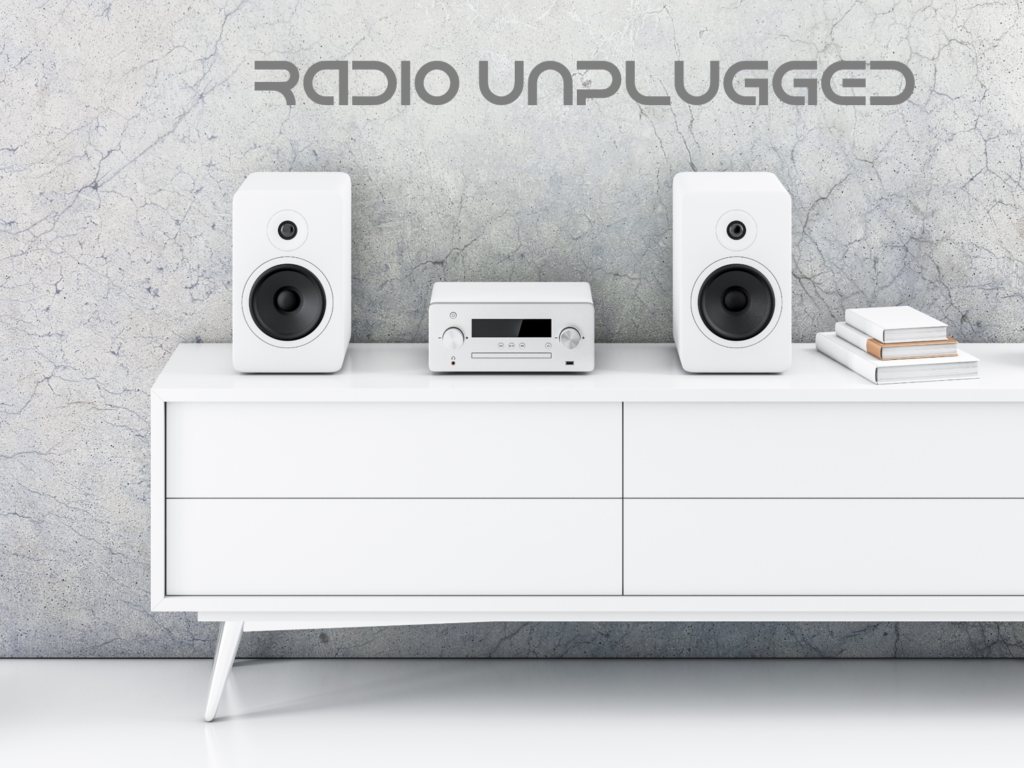
If you do this long enough, and there are certain things you just know – about yourself and your radio career.
This is a business that is all-consuming. For managers, most oversee entire clusters. PDs often are responsible for multiple brands. And for air talent, there is no longer such thing as “4 and out the door.”
To survive in modern day radio, it helps to be a Type A, a multi-tasker, a 24/7 social media-ite. According to our new AQ2 study, nearly three-quarters of on-air personalities make at least one station appearance a week.
But we also know the value of taking a break, unplugging, turning it off. I got a taste of that earlier in the summer with a trip to Italy. No, I didn’t turn off my iPhone and I did bring my laptop along. But for hours and hours (aided by a 6 hour time difference), I was not in touch with radio.
And it was healthy. I know that with a few more weeks of summer left, many of you will be packing up the SUV or heading to the airport to get away for a few days – or maybe longer. If you get that chance to take some time off, I wish you well and hope the time away from the fray serves its intended purpose.
That’s all well and good when we’re actually away. But what happens when we return to the routine, the grind, the ratings, the sales pressures? How do we retain that “away from it all” feeling?
I was reminded of that when Lori Lewis sent me a great story in Inc. – “How I Unplugged All the Digital Nonsense and Created the Perfect Music Club Experience” – by Michael Dorf.
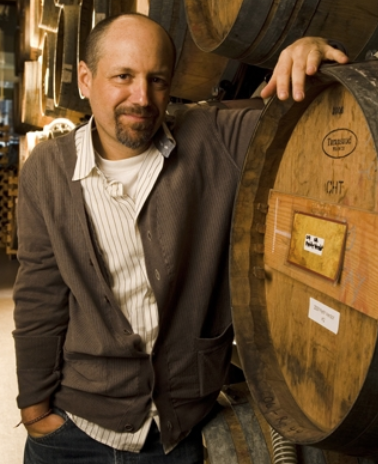
Dorf is a guy who’s also in the music and entertainment business. He created City Winery in New York City, an entertainment concept that combines his love of music and wine that has now spread to other markets.
But the process of creating the optimal environment for his artists and his customers was not an easy one. And like many of us in radio, Dorf was guilty of letting platforms obscure the experience. While he believed in his performers, he also became consumed by the digital trappings – live streaming, video, data mining, and the other outlets that can make you forget we’re not dealing with “content” – it’s music, it’s art, it’s entertainment.
Instead, Dorf created an environment where people could purely enjoy the music and the aromas of a winery in a venue millions of miles away from arenas, clubs, and stadiums.
Dorf’s simple point is this:
“In our rush to adapt to the demands of the new world, business leaders have overcompensated to the extreme that anything carrying a whiff of analog is cast aside as hopefully out of date, irrelevant to our future, and probably uncool to boot.”
The guy who cuts what’s left of my hair – Sergio – is a huge music fan. He and his girlfriend jump in their truck and drive hundreds of miles to see their favorite bands. Sergio is a major fan of Jack White’s – the Detroit native who was the force behind the White Stripes, and now a music career 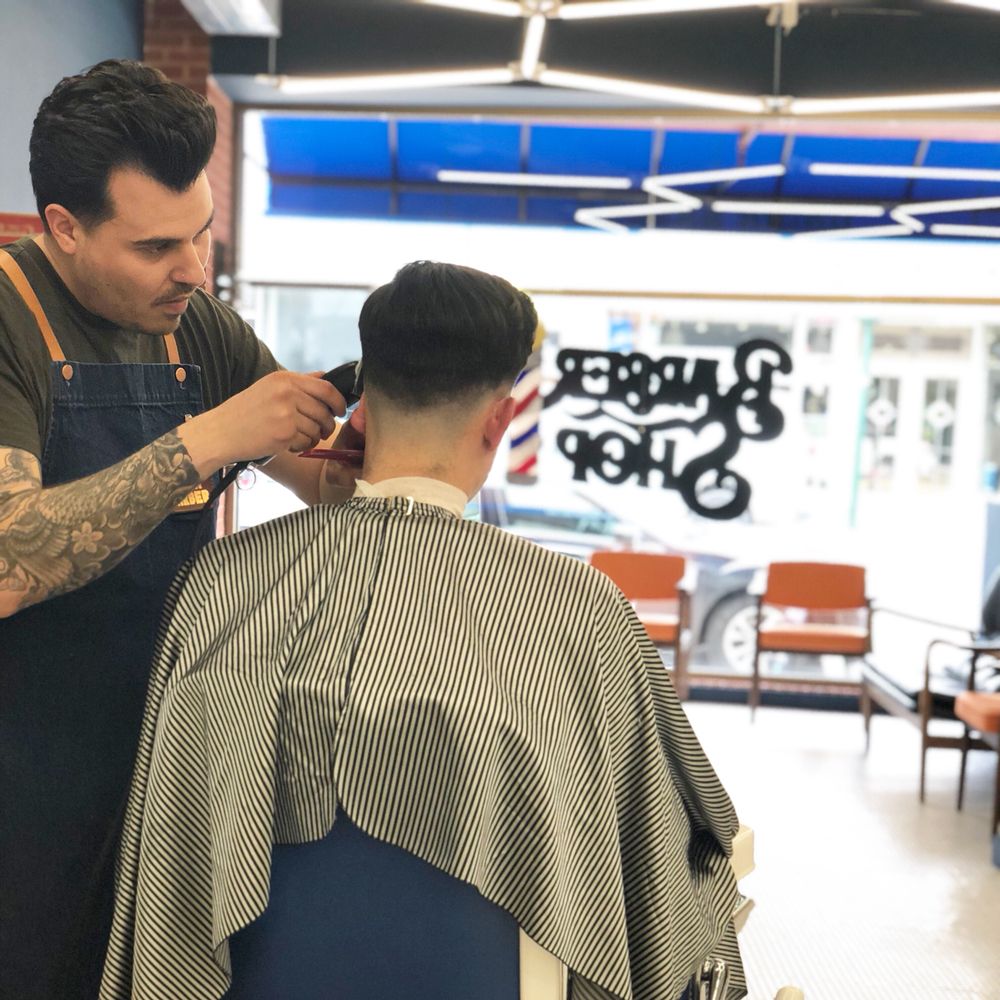 that covers many genres and even building a vinyl record pressing plant here in the Motor City.
that covers many genres and even building a vinyl record pressing plant here in the Motor City.
One of Jack’s side projects is the Raconteurs, a great band that has steadily built an impressive following over the past decade or so. Recently, the band played multiple concerts in the Metro Detroit area, and Sergio went to every show.
These days, you can’t see Jack White perform without sticking your phone in one of those Yondr pouches (pictured lower right) – technology that allows you to enjoy concerts…without technology.
Sergio told me that part of the ritual of enjoying Jack White performing on stage is doing so without staring at a 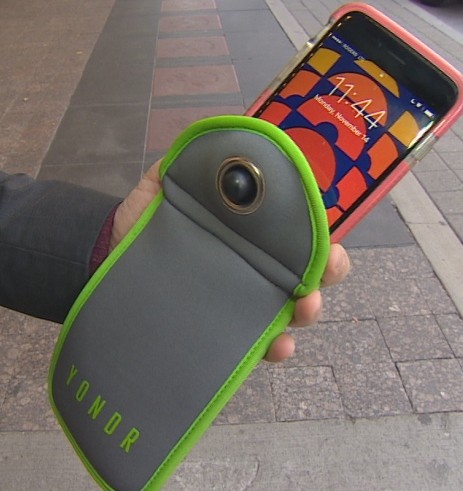 screen, taking selfies, checking email, texting with other people at the concert, posting photos to Instagram, Facetiming with your buddy in East Lansing, sending Snaps, keeping up with sports scores, or checking email again.
screen, taking selfies, checking email, texting with other people at the concert, posting photos to Instagram, Facetiming with your buddy in East Lansing, sending Snaps, keeping up with sports scores, or checking email again.
There is something truly liberating about enjoying live music and the communal concert experience without the distractions of being tethered to your smartphone.
To truly appreciate musical performances, White and others are reminding us that traditional, old school ways of being entertained are precious commodities in our tech-infused world. We’re living in a time when just about every form of media has become produced, posted, and consumed on-demand. Whether it’s playlists, podcasts, or video, it’s all packaged and controlled by algorithms trying to scientifically entertain us.
But there’s a lot to be said for spontaneously being entertained – in real-time – without the technology getting in the way.
And the same is true of the radio experience. I saw that once again up close and personal this year at Morning Show Boot Camp 31 in Chicago. For the air talent on hand at this annual gathering of on-air practitioners, it’s like a high school reunion – a chance to commune with peers, hang out, compare notes, have a good time, and learn.
For those of us on the management side, Boot Camp is a reminder that the human part of our radio stations – the entertainment, the fun, the community connection, the characters – is what sets radio apart from the digital machinery and gadgetry that has defined our lives in recent years.
I got to interview Beasley Media’s CEO Caroline Beasley on Friday morning. It was great for Boot Camp attendees to get to know one of radio broadcasting’s new leaders. But the best interaction occurred the evening before at a Chicago restaurant where Caroline entertained more than a dozen on-air entertainers from Beasley stations as far away as Detroit, Boston, Philly, Augusta, and Fayetteville. Or they entertained her.
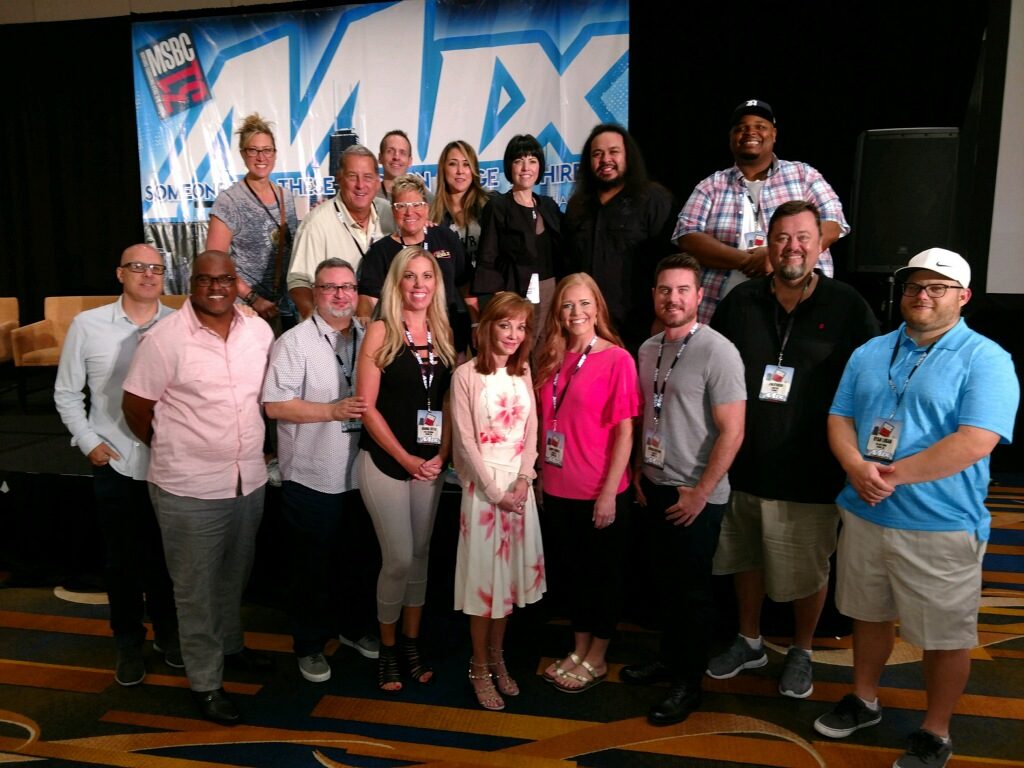
It’s easy to get caught up in the spreadsheets, EBITDA, and metrics. It’s the personal interaction that makes radio so special.
And that is precisely what Dorf’s story reminds us to keep in perspective:
“As technology becomes more deeply woven into our lives, the key to success for many companies can be found in satisfying their customers’ yearning for live human interaction.”
Those of you know me and my company – from working with us and this blog – know that no one has embraced technology in the radio business over the past couple decades more than us. We have especially been vocal – with the help of studies like our Techsurveys – about the need for radio to transition, transform, and change.
But the essence of what makes radio an essential part of so many lives is the personal, local interaction that has often been back-burnered in the rush to keep up.
That was a big takeaway from our new AQ2 study, as well as from session after session at Boot Camp. It’s important to remember this key finding from our study. When we asked our 1,000+ DJs, shows, and hosts what it is that drives them to be on the radio, their answers were obvious and definitive – to have fun, to entertain, to be emotionally fulfilled, and to serve their communities.
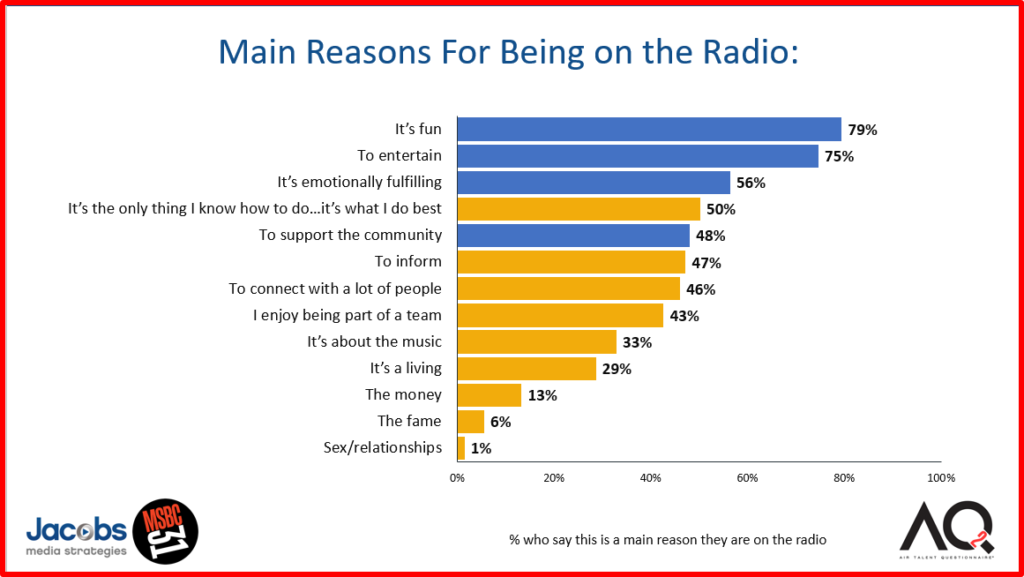
I’m hoping that spirit comes across at this year’s Radio Show in Dallas next month. It is easy to get caught up in the mechanics of radio – whether it’s the financial side, the engineering, and new media sessions that will cover everything from podcasting to social media to video cameras in the air studio.
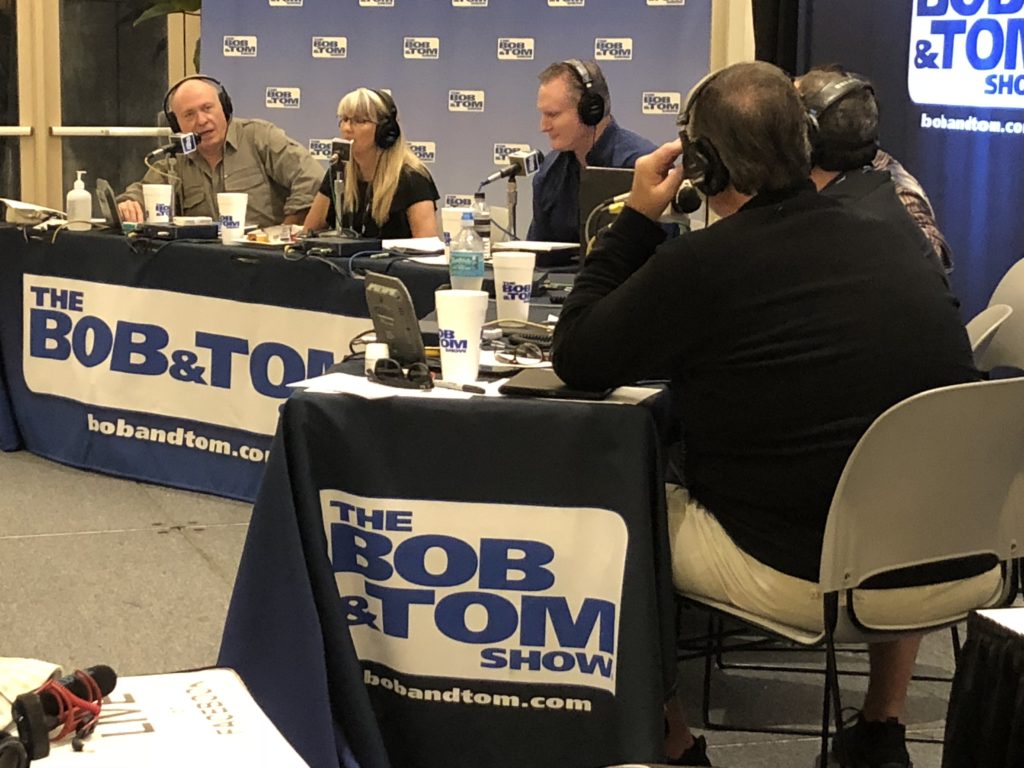 At last year’s NAB/RAB-fest in Orlando, something interesting happened. There was actual radio at the Radio Show. The “Bob & Tom Show” broadcast their ensemble show live each morning, perfectly positioned right outside the main meeting area. Every convention attendee walked past this venerable team doing what they do, and many stopped to take it in. And many were heartened to actually see live radio happening before their very eyes at the industry’s main event. It was a reminder that as much as we try to make radio a science and a business, it will always be an art.
At last year’s NAB/RAB-fest in Orlando, something interesting happened. There was actual radio at the Radio Show. The “Bob & Tom Show” broadcast their ensemble show live each morning, perfectly positioned right outside the main meeting area. Every convention attendee walked past this venerable team doing what they do, and many stopped to take it in. And many were heartened to actually see live radio happening before their very eyes at the industry’s main event. It was a reminder that as much as we try to make radio a science and a business, it will always be an art.
I’m told the Bob & Tom team will be back in Dallas to reprise their live broadcasts. at this year’s Radio Show. And I wouldn’t be surprised to see other shows actually broadcasting from the Radio Show.
Sometimes, you just have to admit the people behind the mics may understand the essence of radio better than most of us do.
- Media And Technology In 2025: Believe It Or Not! - April 18, 2025
- In Radio, You Just Never Know - April 17, 2025
- The Secret To Making A Great Podcast (And Great Radio) - April 16, 2025




Leave a Reply